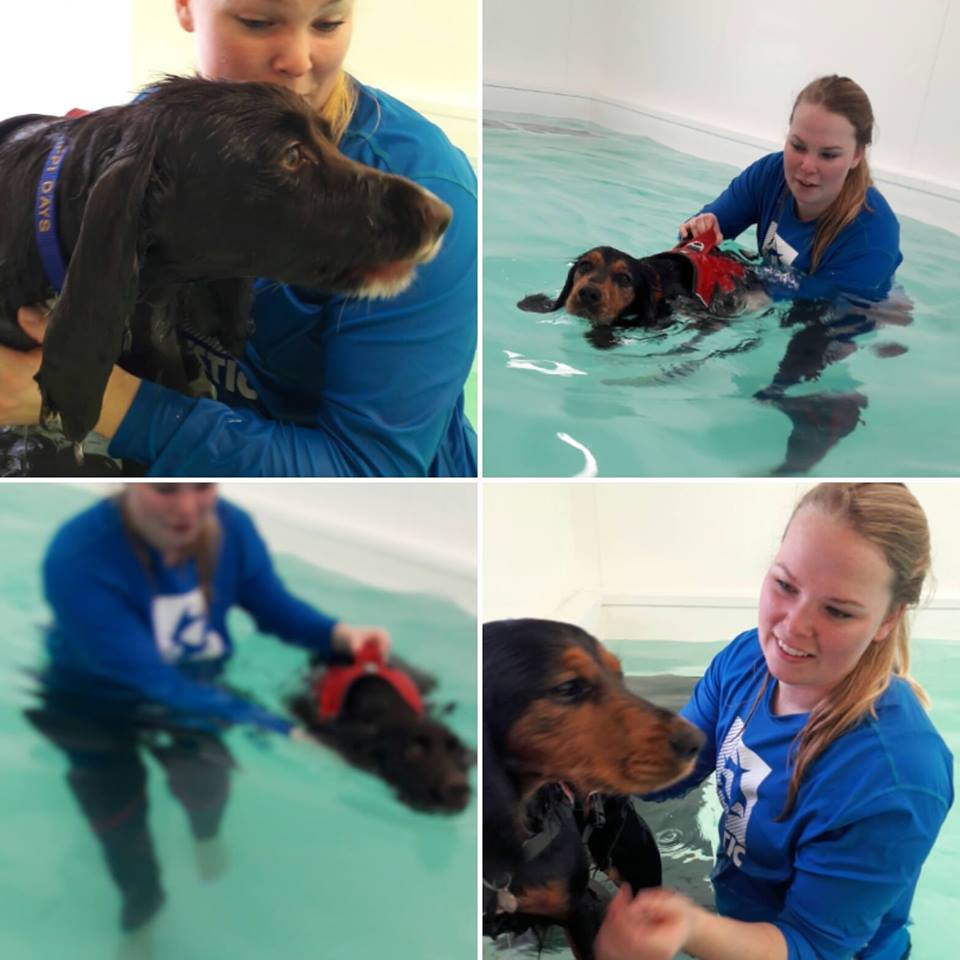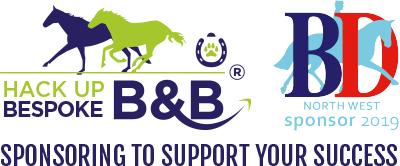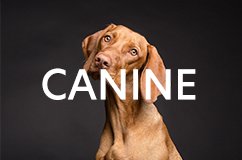

Therapies for Dogs
What else can we do for our dogs? We look into complementary therapies suited to dogs alongside their Hack Up Bespoke.
We all strive to do the best for Man's Best Friend but sometimes just love and attention is not enough and we need to intervene. At Hack Up Bespoke we have created Bespokes to suit all sorts of breeds of dog with all sorts of issues. You are safe in the knowledge that we can provide a product that will work alongside other complementary therapies and we encourage it.
Therapy Options
Massage:
This is a hands-on therapy which most dogs enjoy. However, in some cases ractive or dogs in pain may not enjoy a massasge. Care should always be taken when introducing therapies to a dog for the first time. It can be used to relieve pain, discomfort in muscles, ligaments and connective tissues, prevent buildup of scar tissue and can be useful post injury or post op to stop muscles joining together. It can also help with decreased mobility caused by joint degenration or genetic or breed specific type problems.
Benefits include;
- Improved mobility, flexibility and range of motion
- Relieves tension, stiffness and soreness
- Reduces recovery time and helps get them back active sooner
- Relaxes muscle spasms, tightness and knots
- Relieves stress, anxiety and depression
- Improves circulation of blood and lymph, improving oxygen saturation and toxin removal
- Improves muscle tone
- Stimulates the nervous system which can be a positiv effect on behaviour
- Improves skin and coat condition.
Acupuncture:
A Traditional Chinese Medicine which uses fine needles inserted into certain areas on the body to improve or reduce illness or pain. The areas the needles go in are called Meridians and when stimulated these balance the flow of energy, the Qi (pronounced chi) and blood through the body. This flow is in circadian rhythm, the body clock, a cycle of 24hrs.
Conditions treated include;
- Arthritis
- Hip dysplasia
- Nerve injuries and spinal cord problems
- Joint disease
- Skin conditions
- Seizures / epilepsy
- Asthma
- Performance
- Reproductive problems
- Endocrine disorders
- Immune function
- Systemic inflammatory conditions
Acupressure:
Goes on the lines of accupuncture but is done with pressure not needles. This can be done at home by the owner, is far less invasive and also good for dogs adverse to needles.
Shiatsu:
Similar to Acupressure but uses firmer movements and stretching. It go on the belief that pressure, stretches and movements stimulate the dogs' skin to release hormones and antibodies into the system. It also works with Meridians too, which when the flow of energy is disrupted can result in weak muscles, poor organ functionad low energy which can lead to depression lack of enthusiasm and low self esteem.
Reiki:
Is the Japanese practice of energy healing. It involves laying hands on or very close to the dog's body. Different hand tecjniques are used for different problems, used alongside meditation and breathing techniques for positive energy transfer. It effects the mind, body, spirit and emotions. It can be used for behavioural issues as well as general health and well being. It cannot diagnose but can provide physical and mental relief for sick or injured dogs. It can also be used to promote well being and maintain an energetic balance in fit, healthy dogs. The dog will often end up deeply relaxed or will fall asleep.
Tellington TTouch:
TTouch therapy involves light pressure finger movements to manipulate the skin in tight circles around 390degrees. Starting at 6o'clock and ending at 8o'clock, these circles are made over the dogs' body in connected lines with varying pressures depending on breed and body condition. It is believed the rhythmic stroking relaxes the dog and stimulates the nervous system.
It is used to enhance halth and improve performance, to relax prior to training to increase concentration. It will improve the bond between human and dog and is also used for behavioural issues such as chewing, barking, pulling on the lead, over excitement and even aggression but as with any touch therapy it should be done with care to an aggressive dog as they may not like the touch.
Trigger Point Therapy:
Trigger points, also known as 'knots' are areas of tissue which are painful when touched. They usually occur in areas of muscle from overuse of the muscle, usually over the shoulders, neck and hips. They are usually easy to locate as are tender and can seem to pulsate. To help remove these trigger points pressure is applied using a thumb or massage tool to a depth comfortable to the dog. This traps the muscle against bone and is held for a few seconds then slowly released. This is repeated with increased inward pressure. Unlike other touch therapies there is not other motion other than inward. This action helps the tissue slowly open up and relax. As this is a potentially painful process lots of care should be taken by the proffessional doing it. It is essential a trained person performs this as an untrained person can cause damage to muscle tissue. If ti is a particularly senstive area ice canbe applied prior to the therapy to help numb the area. It is possible to bruise the area if treated too often so repetition should be done after 2 or 3 days to reduce over working the area. It will also give the area time to remove toxins or damaged cells through the circulation and nerve supply recovery time. Causes of trigger points can be due to misalignment of bones or a physiological problem. Regular stretching of muscles would be recommended if prone to trigger points. To find the cause you may need to refer your dog to a vet or canine orthopaedic specialist.
Canine Physiotherapy:
This can be used to treat a variety of physical dysfunction and injuries, to help improve strength, mobility and flexibility, it can reduce pain and prevent re-injury.
Conditions benefitting from physiotherapy include;
- Muscle pain, strain, tightness or spasms
- Rehabilitation post injury
- Injured or diseased joints
- Hip dysplasia
- Ligament and tendon injuries
- Osteoarthritis - to maintain mobility and reduce discomfort
- Muscle imbalance/atrophy
- Paralysis and paresis
- Improvement of muscle tone and range of movement
- Wounds - aids tissue repair and minimises scar tissue.
Different techniques can be applied based on condition treated. Treatments can include soft tissue massage, stretching, trigger point therapy, accupressure and joint mobilisations. They can also use water, laser and ultrasound treatments alongside. As the variety of treaments is vast practitioners should be trained professionals for this reason.
Canine Osteopathy:
Osteopathy partly involves finding underlying causes for pain and discomfort. It involves complete body health by treating joints, tendons, muscles, nervous and lymph systems. If the entire structure is not functioning properly everything the dog does can be effected. They use a variety of techniques to address mobility issues. Stretches, massage and joint mobilisation to improve and maintain mobility. Cracking noises can be heard but are painless. Treatment may be worth seeking if your dogs show any of these signs;
- Reduced performance in work or play
- Injuries caused by landing awkwardly or misjudging an obstacle
- Unusual behaviour patterns
- Unexplained limping or lameness
- Reluctance to stretch or reach over jumps
- Post-surgery issues.
A good health check is suggested if your dog is about to undergo vigorous training regime and/or comepetition.
Ultrasound Therapy:
Sound waves can travel through skin. It can be used for imaging as well as treatment. Thermal Effect uses heat to reduce swelling and Non-Thermal Effect is used more to help heal wounds. Ultrasound promotes new connective tissue growth, accelerates rate of repair so it can be used on fracture and soft tissue damage. Enzyme activity and blood flow is increased which reduces swelling, relieves pain, reduce scar tissue build-up and can decrease muscle spasm in ligaments, tendons and muscles. It can increase the range of motion in stiff and sore limbs. Frequencies, intensities, depth of penetration and the speed of the wand passing over the skin can vary depending on the tissue type, quality of muscle, breed, and injury being treated. This means only a qualified professional should treat animals with ultrasound. It can be combined with other therapies, traditional and alternative.













